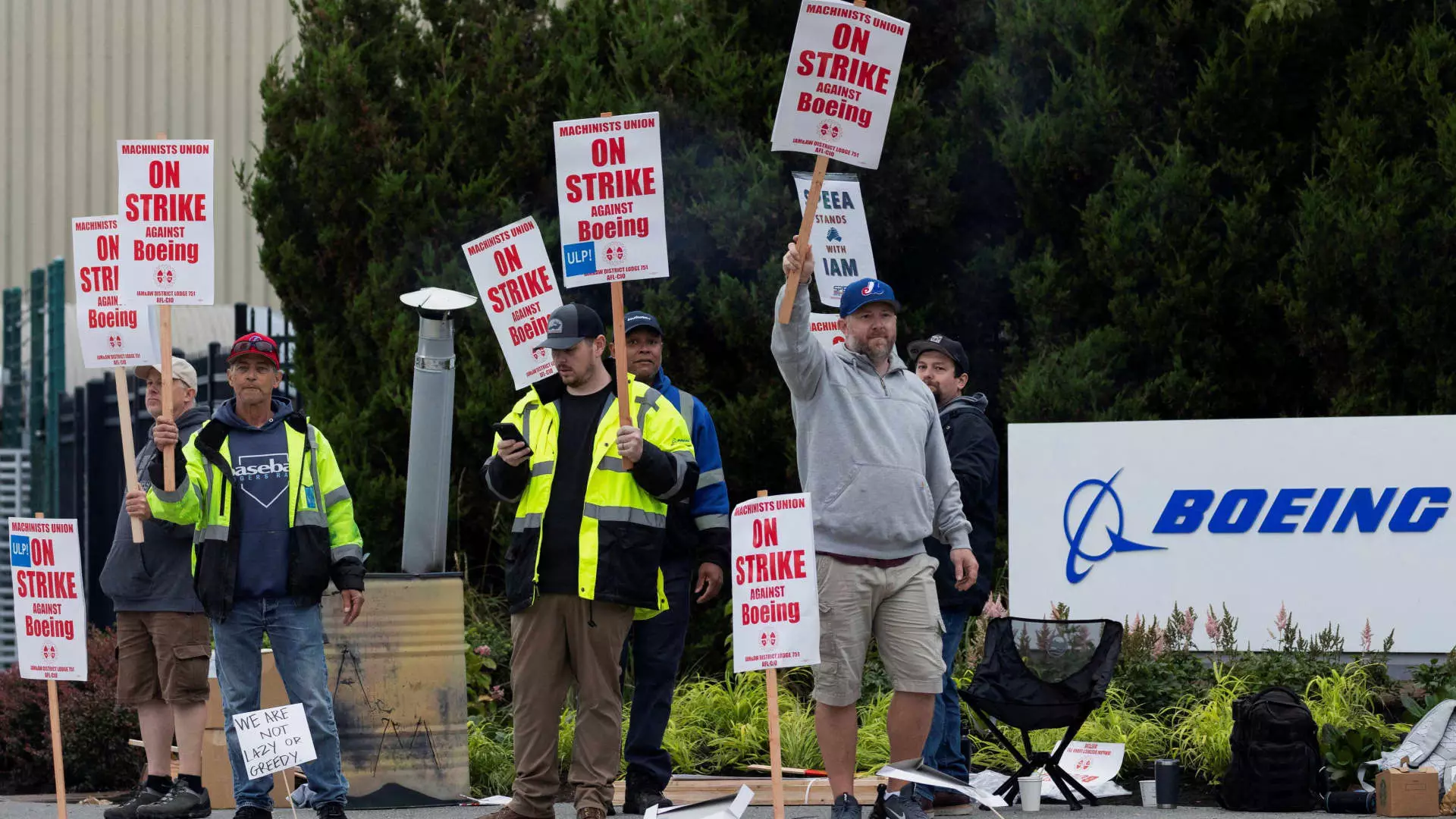In an era where labor disputes are becoming more commonplace, the ongoing strike by Boeing machinists sheds light on the systemic issues faced by employees and employers alike. With workers advocating for better pay amidst rising living costs in the Seattle area, this situation has far-reaching implications not only for Boeing but also for the aerospace industry at large. The complexities surrounding the strike arise from various factors including wage negotiations, the cost of living, and the broader economic landscape that affects both the company and its workforce.
As Boeing workers step away from their assembly lines, their motivations extend beyond mere dissatisfaction with their wages. For many machinists, the struggle is deeply tied to the soaring cost of living in the Pacific Northwest. The financial pressures that accompany rising housing prices, which have surged by 142% between 2013 and 2023, are palpable. Many machinists are not just striking for pay raises; they’re fighting for their livelihoods in an increasingly expensive region.
Workers are taking proactive steps to manage their financial constraints during the strike. Many have sought side jobs in industries such as landscaping and furniture moving, showcasing their determination to make ends meet while voicing their grievances. The union’s efforts to sustain worker morale during this tumultuous period, such as providing food and warmth at picketing sites, exemplify the community spirit among the machinists. The camaraderie displayed reveals a workforce that not only takes pride in their craftsmanship but is also willing to support one another through tough times.
Boeing finds itself entrenched in a financial quagmire, grappling with a staggering $60 billion debt and unyielding operational costs. The ongoing strike, which has extended into its second week, is estimated to cost the company around $50 million daily. This financial burden compounds the challenges faced by a company that has not turned a profit since 2018. Recent manufacturing crises, including significant incidents involving the 737 Max, have further stunted Boeing’s recovery in a highly competitive market.
The company’s reliance on a skilled workforce is clear; any disruptions in operation ripple down the supply chain. By halting production, Boeing not only faces immediate financial blowback but risks damaging relationships with suppliers and dealers who depend on timely aircraft delivery. The situation presents a critical dilemma for the new CEO Kelly Ortberg, who has inherited a legacy burdened by past mistakes and regulatory scrutiny.
Both the union and Boeing have engaged in negotiations that have, to this point, yielded disappointing results for all involved. The machinists voted overwhelmingly against a tentative labor deal, signaling a strong desire for more substantial wage increases and improved working conditions. While Boeing’s proposals have emerged with wage increases of 25% over four years, workers are seeking a 40% boost alongside other benefits such as reinstating pensions lost over a decade ago.
The apparent disconnect between the company’s proposals and the union’s demands serves to highlight broader issues at play. The union insists that their members’ needs are not being adequately addressed, while Boeing’s leadership remains optimistic about reaching a resolution. The lack of meaningful progress during negotiations raises concerns about the future trajectory of both the strike and the company.
The implications of the Boeing strike extend beyond the immediate impact on the corporation itself. Labor disputes in recent years have echoed across various industries, from autoworkers to airline employees, indicating a growing trend of labor activism. As wages stagnate and the cost of living climbs, workers across the nation are mobilizing for better pay and conditions. Transportation Secretary Pete Buttigieg’s recent comments underscore the government’s willingness to intervene in urging both parties towards a resolution that benefits the workers and the struggling aerospace giant.
For Boeing, the tight labor market complicates matters. With thousands of skilled workers let go during the pandemic, the company now faces the challenge of attracting new talent amid rising competition and a renewed demand for aircraft. The prolonged strike may exacerbate these issues, potentially leading to a skills gap in the workforce that could have lasting effects on productivity.
The ongoing machinists strike at Boeing serves as a critical junction in labor relations and corporate accountability. The interplay between worker demands, corporate financial health, and the socioeconomic landscape paints a complex picture wherein both parties must navigate carefully. As the strike continues, it remains to be seen whether a resolution can be achieved that addresses the concerns of the machinists while positioning Boeing for a sustainable recovery in the competitive aerospace sector. The stakes are high, and the outcome of these negotiations could redefine the relationship between labor and management in the coming years.

